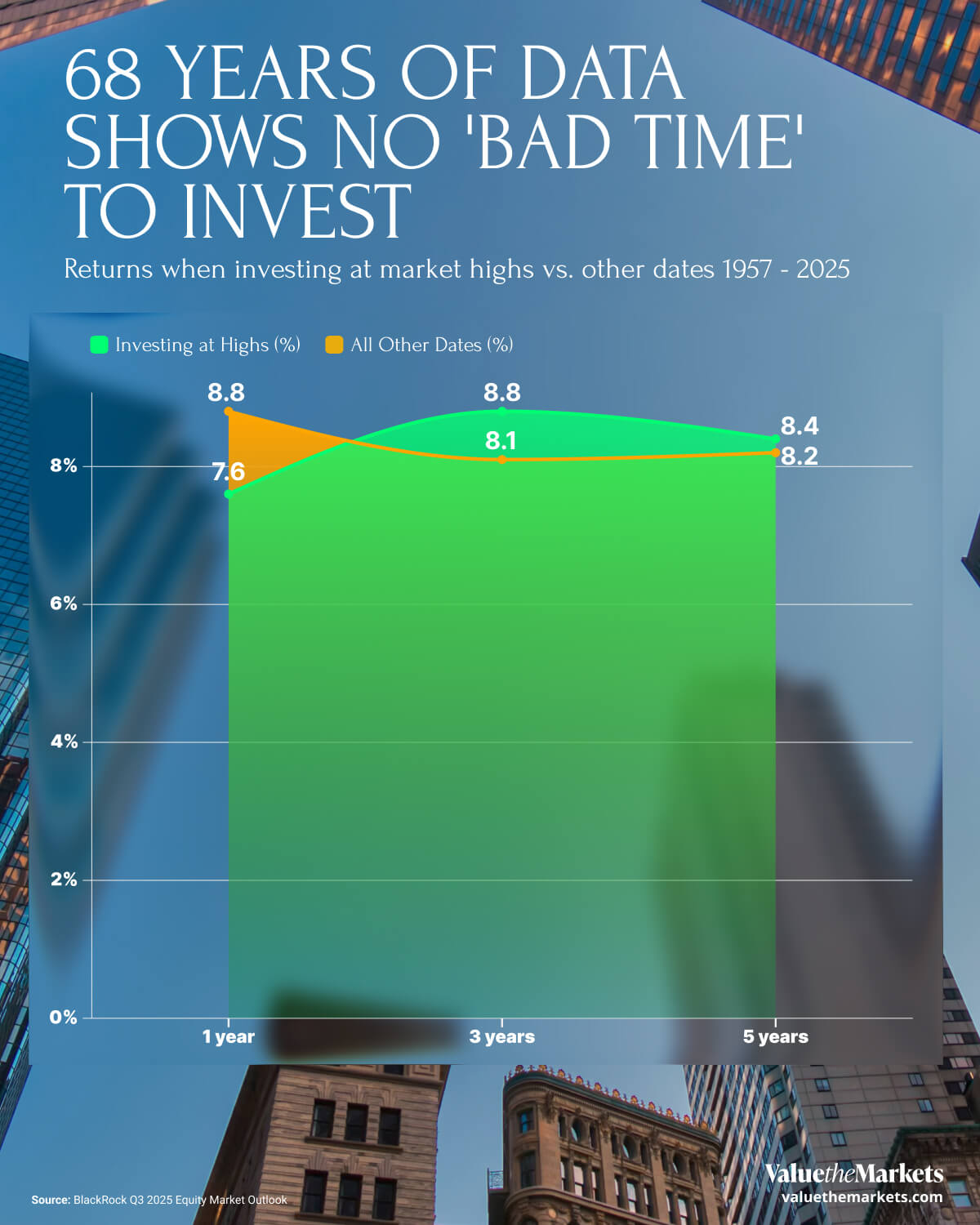
#Buying at Highs Isn’t a Mistake
For many retail investors, buying at an all-time high feels like walking into a trap. The fear is simple: what if the market drops right after? But 68 years of S&P 500 data from 1957 to 2025 tells a different story.
The numbers show that whether you invest when the market is peaking or on an average day, long-term returns are surprisingly similar. After one year, returns were slightly lower for those who bought at highs. But after three and five years, the performance gap nearly disappears.
This reinforces one key idea: time in the market has consistently beaten trying to time the market.
#Why This Matters for Retail Investors
Buying at all-time highs is not a red flag: Returns over 3 and 5 years are virtually the same as those from investing on other dates.
The market sets new records often: Since 1957, the S&P 500 has hit new highs about 18 times a year1. Record highs are normal.
Short-term timing matters less than long-term participation: Missing a few of the best days in the market can drastically lower your overall return.
Investing consistently pays off: Dollar-cost averaging smooths out the impact of volatility and removes the pressure of perfect timing.
Sitting in cash can be costly: Waiting for a pullback that never comes may result in missed gains.
#The Numbers Speak for Themselves
Let’s look at the historical return averages:
| Timeframe | Investing at Highs | Investing on other days |
| 1-Year Return | 7.6% | 8.8% |
| 3-Year Return | 8.8% | 8.1% |
| 5-Year Return | 8.4% | 8.2% |
Over longer time frames, the returns either equalize or slightly favor investing at highs. That’s a surprising but valuable insight for investors who worry they’ve already missed the boat.
#What Retail Investors Can Learn
The data suggests that hesitation, especially based on market highs, may be misplaced. If your investing strategy is focused on the long term, it’s not about finding the perfect entry point. It’s about being in the market.
For retail investors building retirement savings, funding education accounts, or growing wealth gradually, the real risk is sitting on the sidelines. Markets grow over time, but only for those who stay invested.
This doesn’t mean you should dump all your capital in at once. It means you shouldn’t let fear of “bad timing” hold you back entirely. Investing steadily and consistently gives you a strong chance of compounding your returns over time.
#FAQs
Is it risky to invest when the market is at an all-time high?
It might feel risky, but data shows long-term returns are very similar whether you invest at a high or not.
Should I wait for a market pullback before investing?
History suggests that waiting often means missing gains. Pullbacks are unpredictable, and markets trend upward over time.
Does dollar-cost averaging help reduce timing risk?
Yes. It spreads your investment over time, reducing the impact of volatility and emotional decision-making.
How often does the market hit all-time highs?
Since 1957, the S&P 500 has hit new highs about 18 times per year. Highs are normal, not rare.
What’s more important: timing the market or time in the market?
Time in the market is more important. Staying invested has historically led to better outcomes than trying to time entry points.